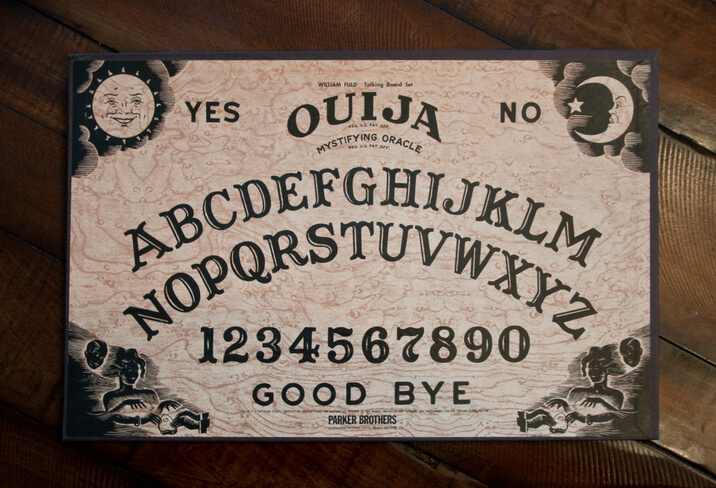It’s probably safe to say that every teenager out there has played with a Ouija board. We’ve all been there: you’re hanging out with your friends and it’s getting late… when someone pulls out that spooky board and suggests turning all the lights off to play in the dark. You and your friends hesitantly sit around the board, place your fingers on the pointer, and wait for messages to be spelled out from the other side. It’s creepy to think about which ghosts might get in touch with you and what they’re going to say, even if you don’t totally believe what’s happening. If this sounds familiar, then you’ve probably wondered at least once where, exactly, this terrifying game comes from.
The Ouija board actually goes back pretty far in history, further back than its popularity in the United States. It’s a “talking board” that has a pretty simple concept: spiritual forces supposedly push your fingers on the pointer (also called a planchette) into a message from the afterlife.
According to the Smithsonian, the Ouija board is probably about 130 years old, although the concept of “talking boards” is an ancient one. Ancient Romans and ancient Chinese traditions used variations of talking boards to communicate with spirits and the afterlife.
The Ouija board itself came to America in the late 1840s, when Spiritualism began in the U.S. (although it had been a big thing in Europe for years).
The movement began with the Fox sisters from upstate New York, who said they received messages from spirits who rapped on the walls to answer questions, and the stories became famous throughout the country.

[facebook_ia_ad_tag adid=”1″]
As Spiritualism became more common, talking boards did too. According to Bustle, J. Edward Cornelius has said that the first modern Ouija board was marketed in the U.S. in 1890. There aren’t many confirmed details, but Cornelius believes it was invented by a man named E.C. Reiche, a coffin-maker in Maryland, along with Charles Kennard. It was then called, “Ouija, The Wonderful Talking Board,” and the story behind the name is kind of creepy. According to Time, Kennard met a lawyer named Elijah Bond. In April 1890, they had a séance with Bond’s sister-in-law, Helen Peters, who was supposedly a “strong medium.” They asked the board what it wanted to be called, and it spelled out “O-U-I-J-A.” They asked what that meant, and it spelled out, “G-O-O-D L-U-C-K.”
It’s kind of weird to think about the fact that something like this took off, but it really did. It was popular during the Civil War, and a lot of families were losing loved ones. They were desperate for a way to communicate with the dead, because they didn’t get much information about them. Time also points out that the Ouija board broke a lot of social rules during the Victorian times — people had to touch while playing, and it allowed you to be alone with the opposite sex.
It was essentially a date game.

[facebook_ia_ad_tag adid=”2″]
Of course, the Ouija board would go on to have a lot of negative connotations, and to be seen as a symbol of evil for many. For some, though, it was just a silly game. Today, it’s still popular — and now that you know the history, you might want to whip it out to get in the Halloween spirit (or not).
